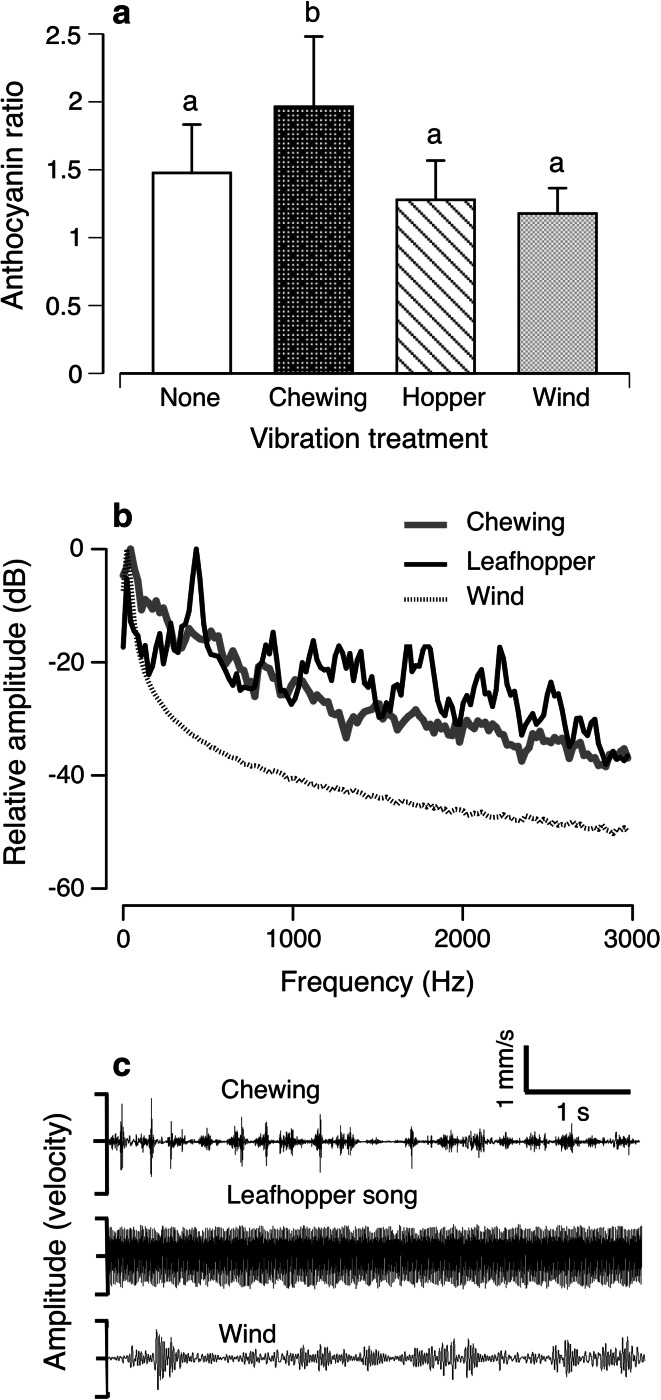Fig. 4.
a Chewing vibrations increased the anthocyanin response to herbivory by A. thaliana ( the ratio of response in fed-upon plant vs. non-fed-upon plant, when both had same treatment exemplar). Error bars 95 % CI. Letters above bars indicate that the response to the chewing treatment was significantly different (p < 0.001) from responses to the three controls. b Averaged amplitude spectra of the stimuli used in the experiment (N = 18 for each stimulus type) suggest that chewing can be distinguished from wind, but not from leafhopper song, based on the frequency content. c Vibration waveforms of a chewing P. rapae caterpillar on A. thaliana; wind on A. thaliana; and a leafhopper, recorded on another host plant. Chewing and leafhopper song have similar amplitude spectra but different temporal features

